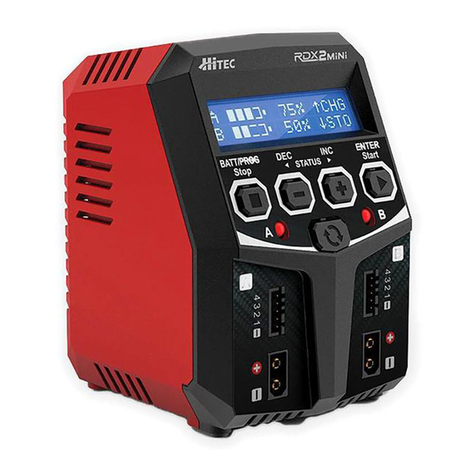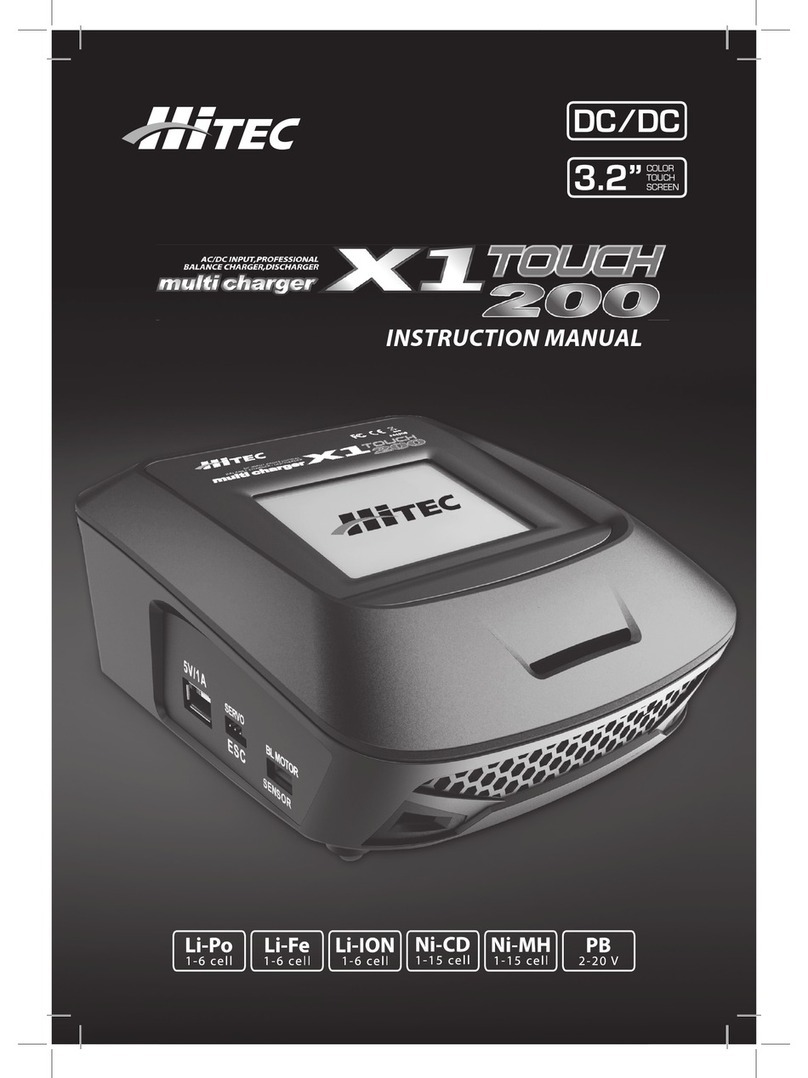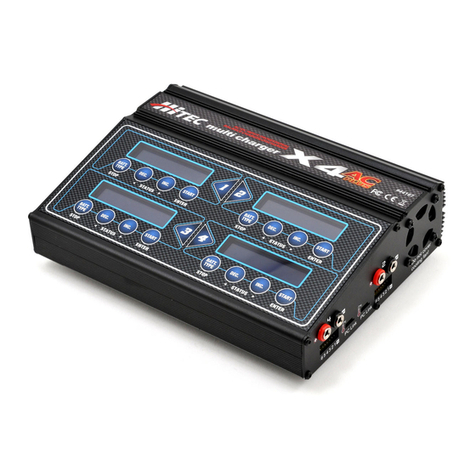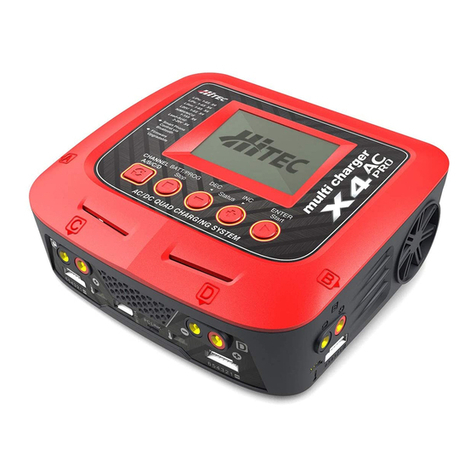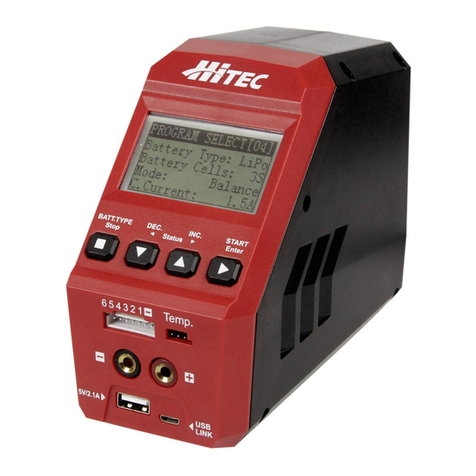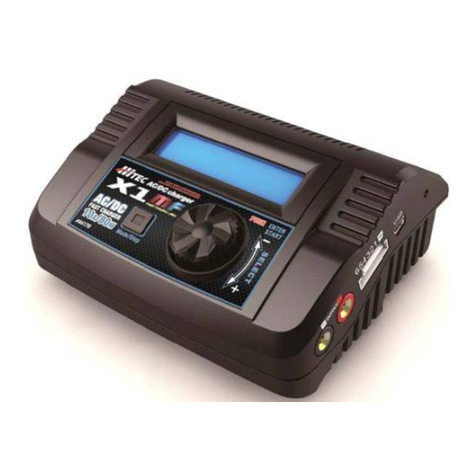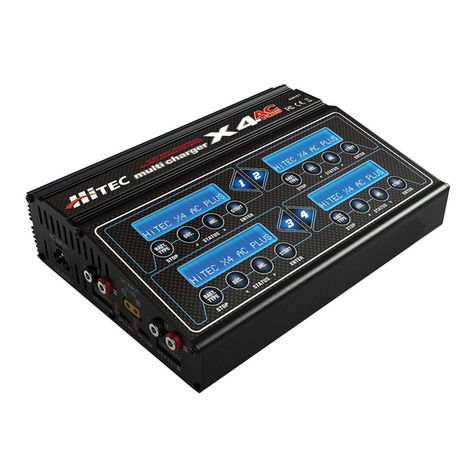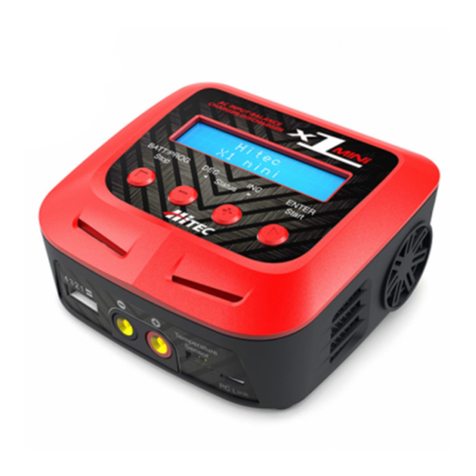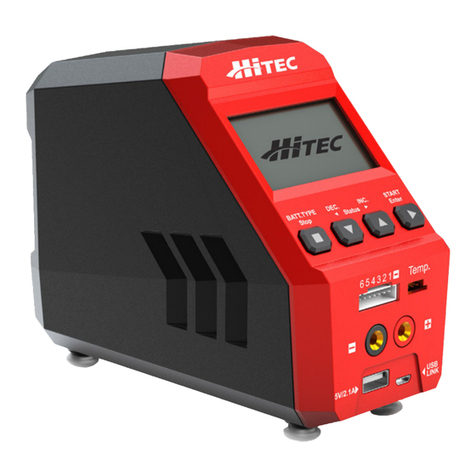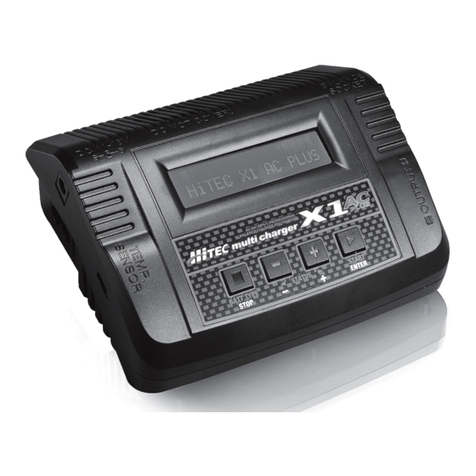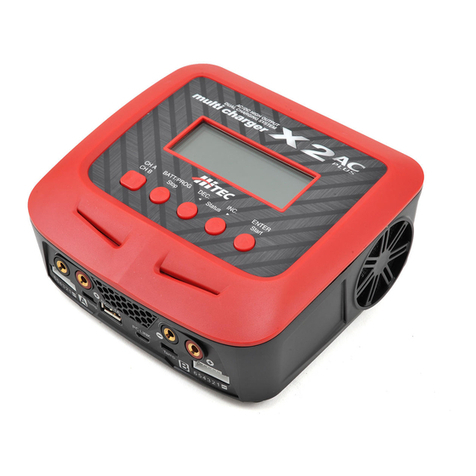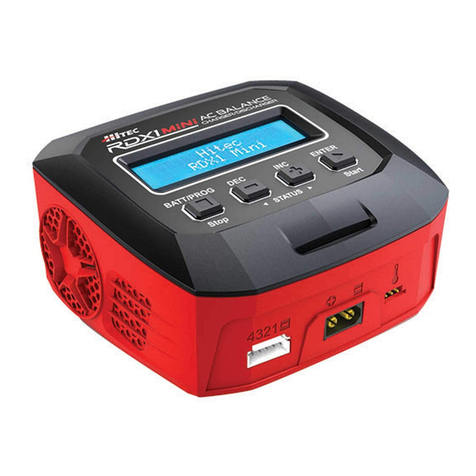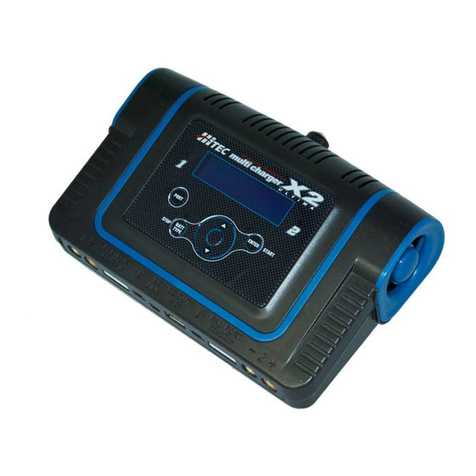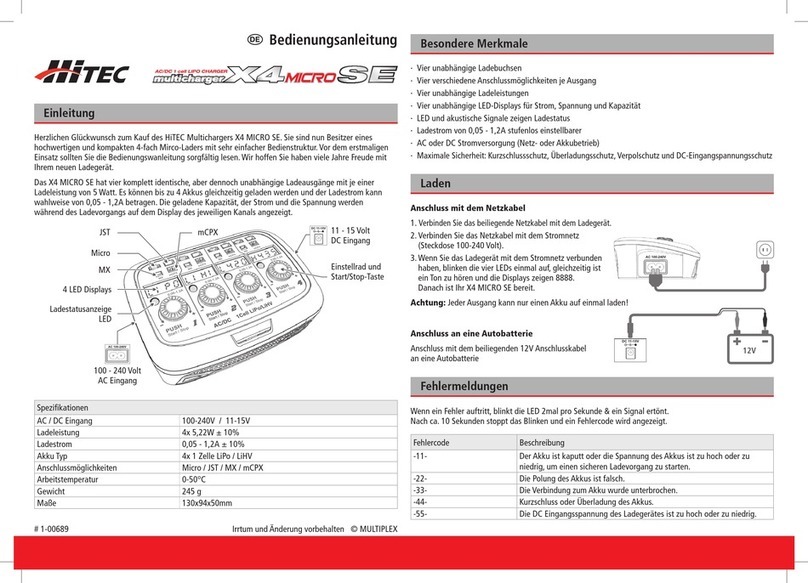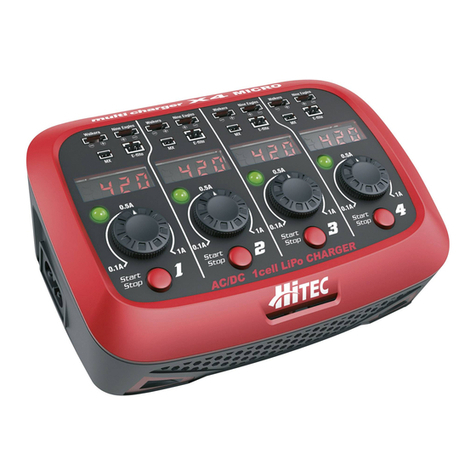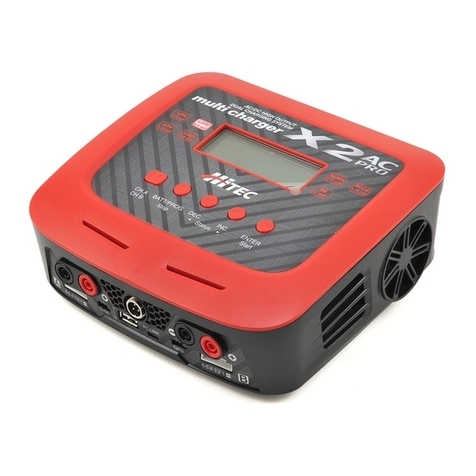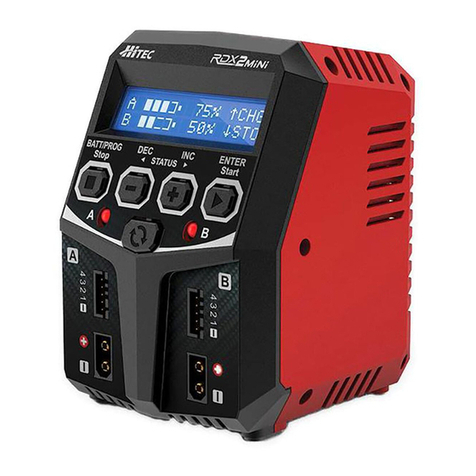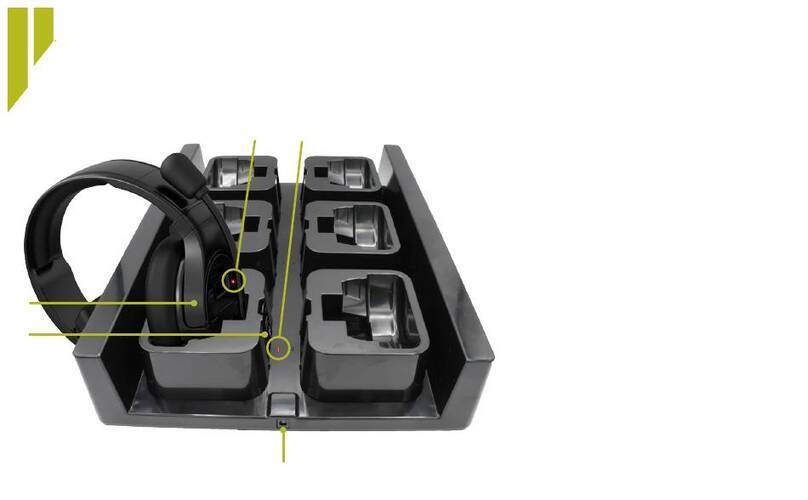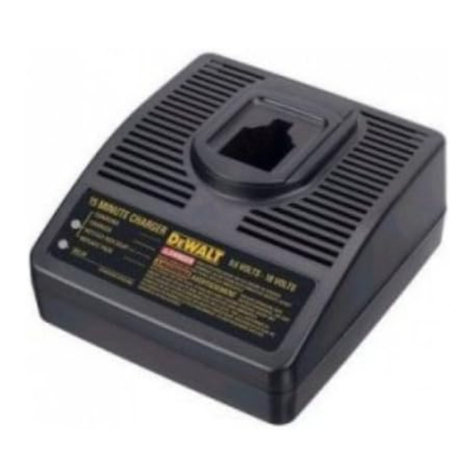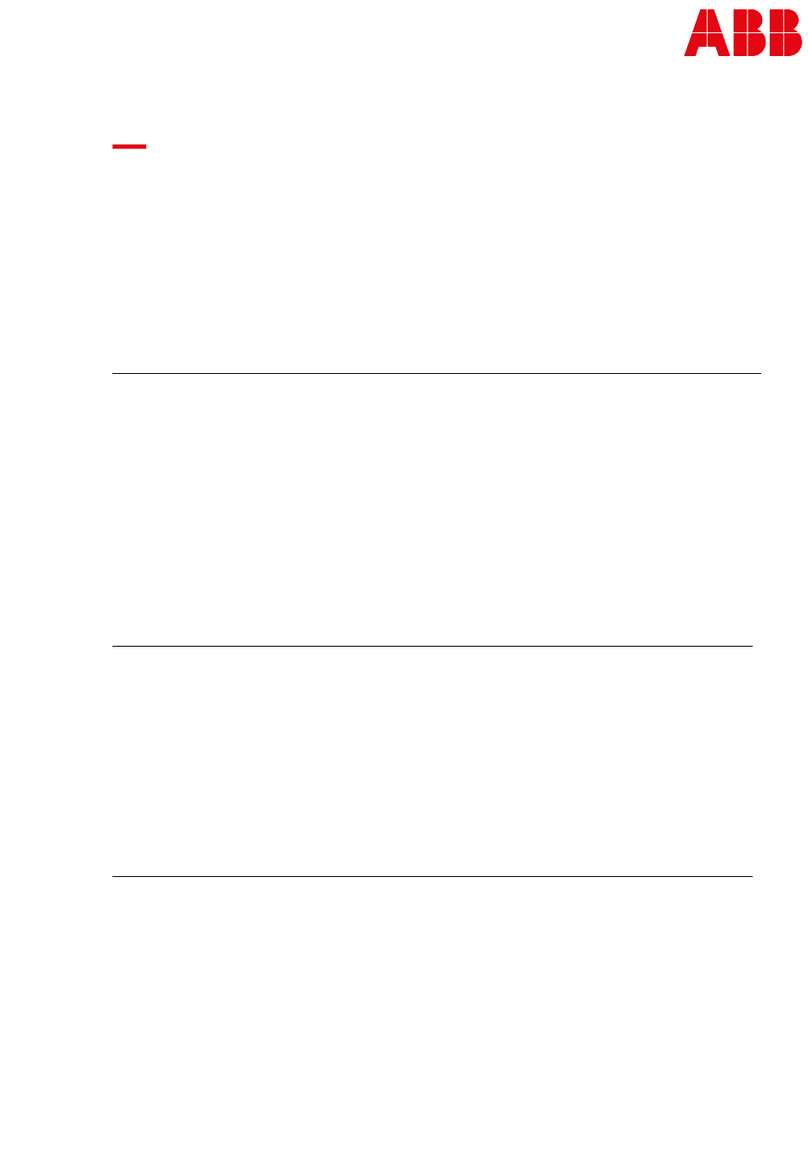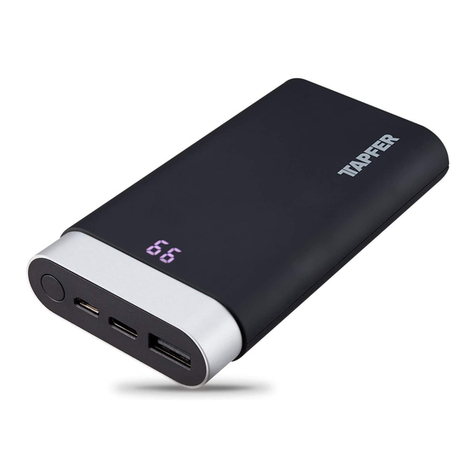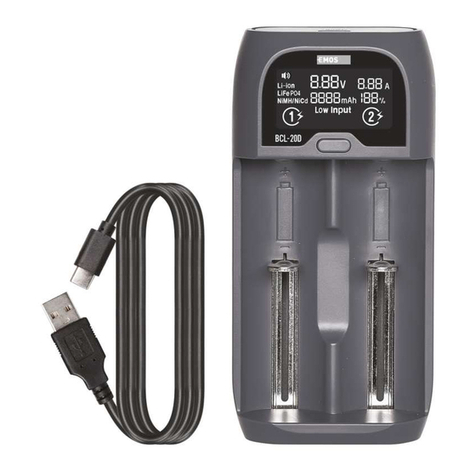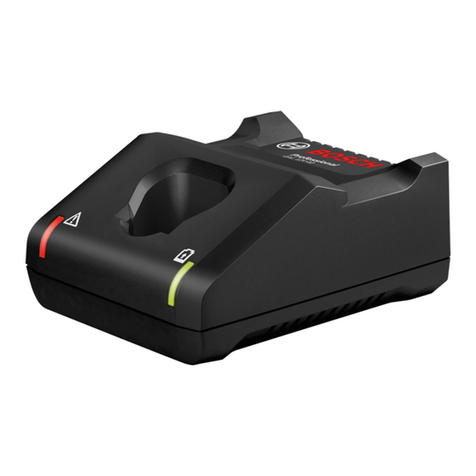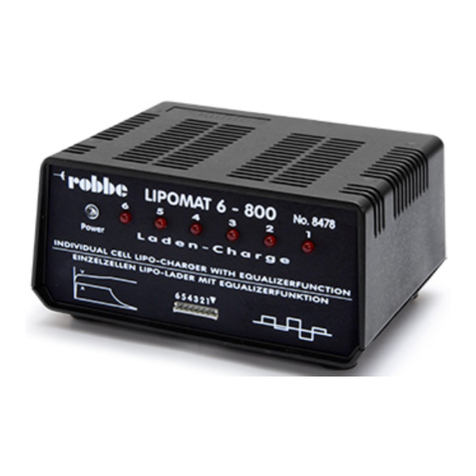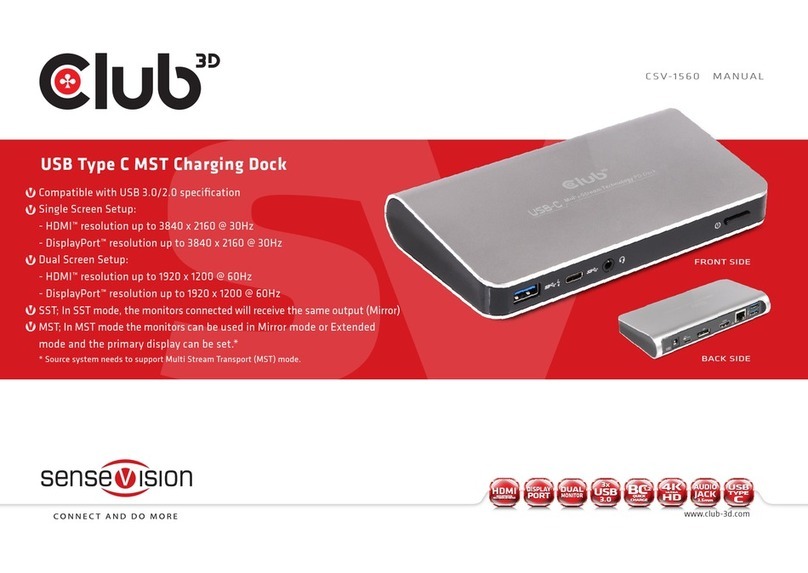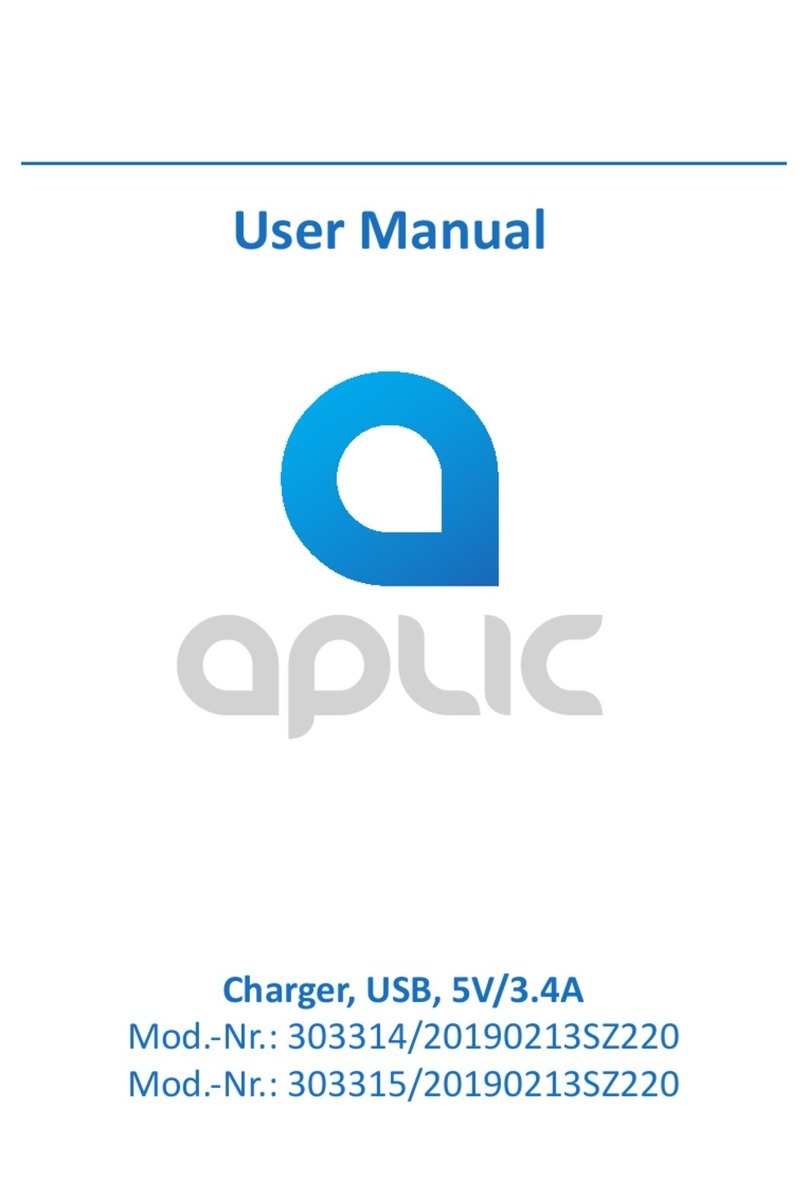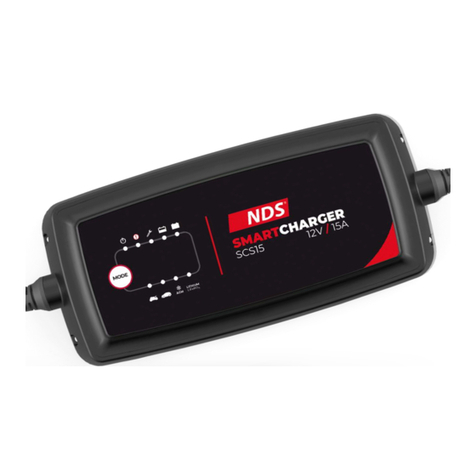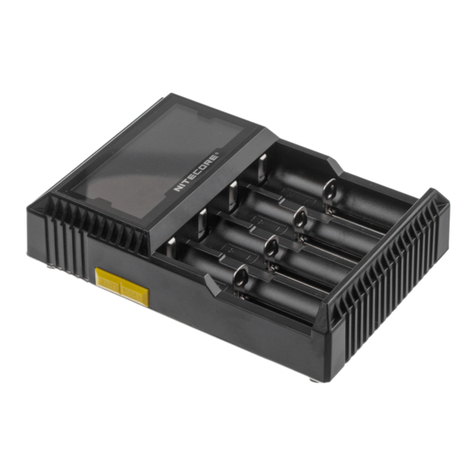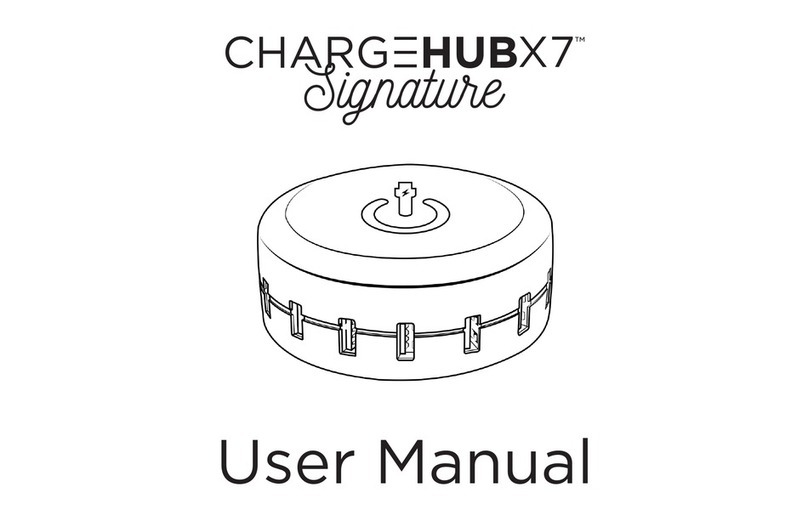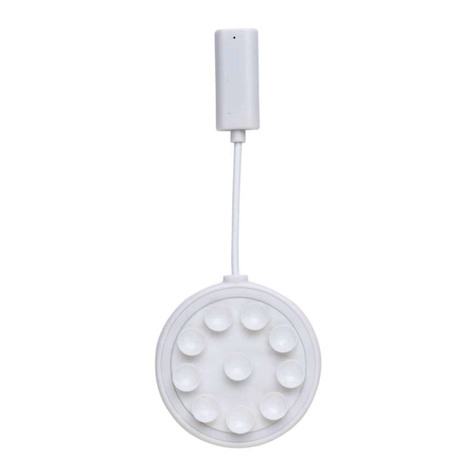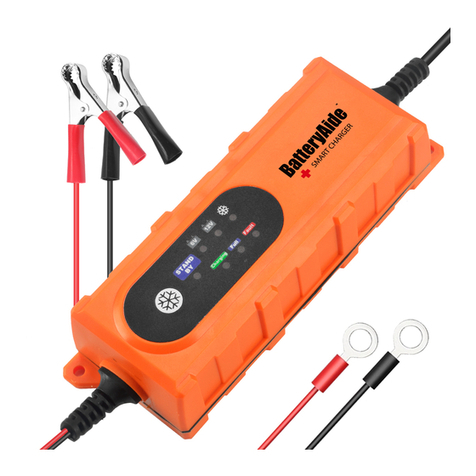
4Hitec
Instruction Manual
5RGEKſECVKQPU
Congratulations on your purchase of the Hitec H4 Multi-Charger. You are now the owner of a compact multi chemistry battery charger with battery management and
integral Lithium battery balancing features.
The Hitec H4 Multi-Charger features four totally independent and identical 120 watt charging circuits for a total power of 480 watts. As a result, it can simultaneously
charge or discharge up to 4 separate battery packs.
The Hitec H4 Multi-Charger can be attached to a 12 volt car battery with the included connector.
You can connect it to a 11 ~ 18 V DC power supply with an amperage rating of 35~40 amps (480~500W).
6*+5%*#4)'49#5&'5+)0'�垒'&':%.75+8'.;(1475'9+6*6*'6;2'51($#66'4+'556#6'&+06*+5+05647%6+10/#07
#.*+6'%4%&75##%%'26501.+#$+.+6;1(#0;-+0&+(6*'%*#4)'4+575'&(14#0;274215'16*'46*#06*#656#6'&
5+0%'9'#4'70#$.'61#5574'6*#66*'75'49+..2412'4.;(1..196*'5722.+'&+05647%6+105#0&*#8'01%10641.18'4
10'ŏ52412'475'14/#+06'0#0%'1(6*'&'8+%'9'#4'1$.+)#6'&61&'0;#0;#0&#..%.#+/51(.+#$+.+6;(14.155&#/#)'
14+0,74;9*+%*#4'+0%744'&&7'61+/2412'475'#0&12'4#6+101(6*+5241&7%6
70.'5516*'49+5'24'5%4+$'&$;.#96*'.+/+61(174.+#$+.+6;5*#..016':%''&6*'+081+%'8#.7'1(6*'%*#4)'4
2NGCUGTGCFVJKU*KVGE*KPUVTWEVKQPOCPWCNECTGHWNN[DGHQTGWUG
5RGEKſECVKQPU
+PRWV8QNVCIG
.%&&KURNC[
7UCDNG$CVVGT[6[RGU
%JCTIG%WTTGPV#ORU/CZ
&KUEJCTIG%WTTGPV#ORU/CZ
%JCTIG&GVGEVKQP&GHCWNV
&KUEJCTIG&GVGEVKQP&GHCWNV
.KVJKWO6[RG$CVVGTKGU
&KOGPUKQP9GKIJV
5CHGV[(WPEVKQPU
1RGTCVKQP(WPEVKQPU
11-18V (Requires a 480-500 watt (30-40 Amp) Power Supply for Operation.)
0.1 ~ 8A (Max 120W) Per Channel or 16A (Max 240W) Using Hitec Bridge Connect
Balance connector can be used with each charge port (LiPo/LiIon/LiFe)
205 x 163 x 52mm / 1200g
0.1 ~ 2.0A (Max 10W) Per Channel or 4.0A (Max 20W) Using Hitec Bridge Connect
LiPo/ LiFe/ LiIon: 1 ~ 6 cell
NiCd/ NiMH: 1 ~ 15 Cell (1.2V ~ 18V)
Pb: 1 ~ 12 Cell (2V ~ 24V)
NiCd, NiMH : Delta Peak Detect
Delta Peak Voltage : 5mV ~ 20mV/Cell, LiPo (4.20V/Cell), LiFe (3.70V/Cell), LiIon(4.10V/Cell), Pb (2.45V/Cell)
- Power Supply Reverse Polarity Protection
- Output Power Short Circuit Detection
- Power Supply Voltage too High or Low Detection
Lithium Chemistry (LiPo/LiIon/LiFe) Type Batteries : Charge/Discharge with
Balancing Function, Charge/Discharge without Balancing Function
NiCd, NiMH : 0.9V/Cell
LiPo (3.0V/ Cell), LiFe (3.0V/ Cell), LiIon (3.0V/ Cell), Pb (1.8V/ Cell)
128 X 64 Pixel Backlight LCD
- Auto Detect Number of Conſgured Cells
- 'nd Charge / Discharge Notiſcation





















